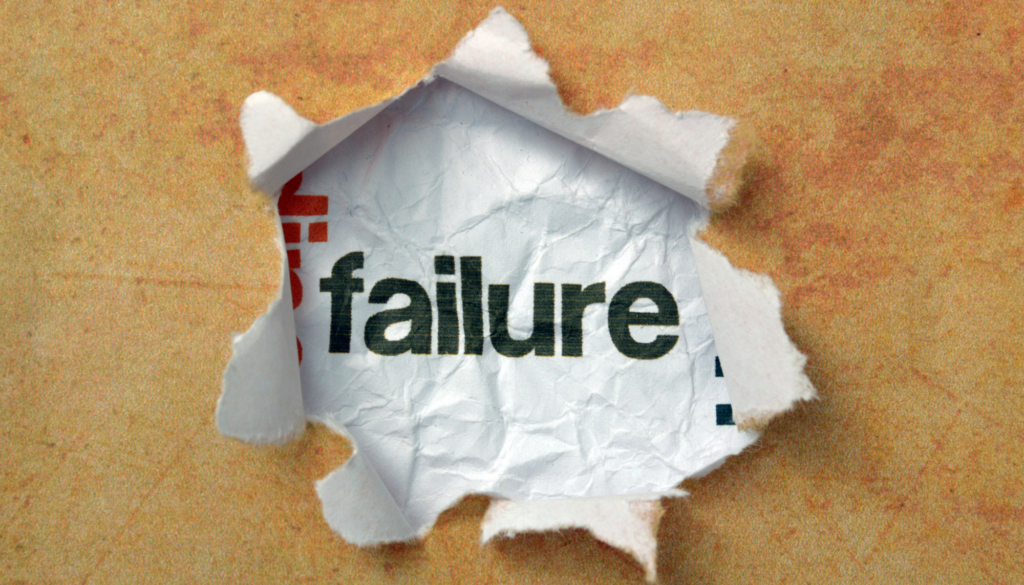Introduction
Yes, you can. The journey starts from YOU. Personal growth is not for others, no matter what you are, no matter what you do, you can start for NOW on. Personal growth isn’t just for celebrities or billionaires. Ordinary people transform their lives every day through courage, persistence, and self-belief. Personal growth is the journey of becoming a better version of yourself—learning new skills, overcoming fears, and improving your habits. It’s not about being perfect, but about making progress.
There are thousand around us who transformed their lives, they are all common people, living beside us. Real-life examples inspire us because they show that ordinary people can achieve extraordinary growth. These stories prove that change is possible, no matter where you start.
We will discuss here, 10 powerful examples of personal growth that will motivate you to take action in your own life. Each example includes:
- The person’s starting point
- Their struggles and turning points
- Exact steps they took to grow
- The remarkable results they achieved
- Practical tips so YOU can apply these lessons
It is quite exciting to explore the lives of these achievers.

1. I don’t have any skill: Learning a New Skill
From Zero to Fluent: How Sarah Learned Spanish at 40
In this age of technology, information and training is at your finger tip. Explore your likeness, interest and go ahead. You can train yourself in any skill for free. Fruther your skill will paint your future colorful.
Take an example of Sarah, a 40-year-old accountant and mother of two, had always wanted to learn Spanish but believed she was “too old” to learn a new language. She had failed French in high school and carried that insecurity for decades.
The turning point came in her life when her company announced expansion into Latin America, Sarah saw an opportunity. She decided to give language learning one more try—this time with a different approach.
She designed her approach as follows:
- Micro-Learning: Started with just 5 minutes daily using Duolingo during her morning coffee. Duolingo is a free, popular language learning platform that offers courses in over 40 languages.
- Immersion Techniques: Labeled household items with Spanish words and changed her phone language
- Conversation Practice: Joined a local language exchange meetup, forcing herself to speak despite mistakes
- Consistency Tracking: Used a habit tracker to maintain her 180-day streak
Finally, in 18 months, she became fluent enough to converse with native speakers. She earned a promotion to lead Latin American accounts department. She could now travel solo in Spain and even helped her kids with their Spanish homework as well taking them on a fully Spanish speaking vacation. Just 40 days and you can make it possible. You are never too old to learn something new. Start small with just 5 minutes daily. Focus on practical vocabulary first. Celebrate every small win to stay motivated.

2. Take life head-on: Overcoming a Fear
Most of us fear to take risk. Leaving our comfort zone is the biggest hurdle in our growth.
Here is a real-life example of Alex how conquered his fear of public speaking. Alex, a talented software developer, avoided all presentations at work. He’d physically shake when speaking to groups larger than 3 people, which limited his career growth.
He realized his weaknesses and took some small but positive steps:
- Baby Steps: First practiced speaking up more in small team meetings
- Safe Environment: Joined Toastmasters, where he gave 30-second impromptu speeches. Toastmasters International is a non-profit educational organization that provides a platform for individuals to improve their public speaking, communication, and leadership skills.
- Visualization: Spent 5 minutes daily imagining successful presentations
- Gradual Exposure: Progressed from team meetings → department presentations → company-wide talks
These are very common steps one can think about overcoming once problems. The only thing required an honest effort, rest ways opens along.
Finally, within two years, he delivered a keynote at a 500-person tech conference. He became known as engineer presenter. He earned that promotion to engineer manager. It all happen due to his realization of the problem, courage, planning and execution.
Fear diminishes with consistent exposure. Start with the smallest possible version of what scares you.

3. Controlling thoughts can design your habits
What a beautiful saying,
Watch your thoughts, they become your words;
watch your words, they become your actions;
watch your actions, they become your habits;
watch your habits, they become your character;
watch your character, it becomes your destiny
Routine in life is a good habit and is very helpful in transforming your life. Here is an example of Mr. James, who transformed his morning habits and you will be amazed by the final outcome.
James, a 35-year-old marketing manager, constantly felt rushed and stressed. He’d snooze until the last minute, skip breakfast, and arrive at work already exhausted.
He realized the problem. The turning point came in his life After reading “The 5 AM Club,” he challenged himself to try waking early for just 21 days. He took some remedial steps also:
- Gradual Adjustment: Started by waking just 15 minutes earlier each week
- Morning Anchors: Created a simple routine: water → meditation → journaling → exercise
- Environment Design: Prepared clothes/coffee the night before to reduce friction
- Accountability: Joined an online 5 AM challenge group
As it is difficult to do than planning. Being honest with oneself is the key of success.
After just 6 months, he wrote and self-publish an ebook in morning hours. He lost 16 pounds through consistent exercise. He also reduced work stress by getting ahead of his day. Habit change works best when gradual. Stack new habits onto existing ones for better success.

4. From Cashier to Store Manager: Maria’s 5-Year Growth Journey
Here is an example, how your personal growth can define your growth in your career.
Maria, a 22-year-old college dropout, was stuck in a dead-end cashier job earning minimum wage. She felt embarrassed at family gatherings when cousins talked about their careers. It makes one feel that something is melting within, quite painful.
A simple event can change your life. After a customer yelled at her over a 50-cent coupon, Maria realized she wanted more respect and better opportunities. This is the moment when one start taking challenges. She took some small steps:
- Skill Development: Took free retail management courses on Coursera after work
- Initiative: Volunteered to train new employees and organize store displays
- Networking: Built relationships with district managers during their store visits
- Mentorship: Asked her store manager for career advice monthly
It is well said, persistence and perseverance overcome mountain. These small steps produced results. She promoted to shift supervisor in 1 year. She became assistant manager in 3 years. She now manages her own store with 15 employees after 5 years and earns 3x her starting salary with full benefits. These are not fancy stories, these are real life happenings.
Anyone can design his own workout:
- Identify 1-2 valuable skills for your desired position
- Spend 30 minutes daily learning (podcasts/courses)
- Volunteer for extra responsibilities at work
- Build relationships with people one level above you

5. Emotional Maturity: How David learned to control his temper
Our emotions play a very important role in our life. They can make or break our life. Here is an example of David, a construction foreman. He had a reputation for explosive anger. He’d thrown tools, yelled at coworkers, and nearly lost his job multiple times.
Again a very common incidence became a breaking point in his life. When his 6-year-old daughter said “Daddy scares me when he’s mad,” David knew he had to change. Again, first and foremost thing is to realizing the problem. He took some very simple steps:
- Awareness: Started tracking anger triggers in a journal
- Pause Technique: Implemented a mandatory 10-minute walk when frustrated
- Communication Training: Took an online course on nonviolent communication
- Accountability: Asked his crew to call him out respectfully when his tone changed
And the results were outstanding. He went from 3-5 angry outbursts weekly to just 1-2 monthly. He repaired relationships with his work team. His daughter now says “I like happy Daddy best”. He received first-ever “Leadership Excellence” award. Yes, it is true.If you are going through the same situation, follow these tips. Notice physical anger cues (clenched jaw, raised voice), practice the 4-7-8 breathing technique, replace “you” accusations with “I feel” statements, consider therapy if anger feels uncontrollable

6. Rewriting Relationships – How Lisa Rebuilt Her Estranged Family Connection
Our relation with our family members, co-workers, neighbors and people in general defines a lot about us. Take an example of Lisa. She hadn’t spoken to her sister in 4 years after a fight over their mother’s estate. Family gatherings were tense, and holidays were spent separately. Mind was full of negative thoughts. It was effecting her health too. She realized the problem when she was seeing old photos of them as close siblings made Lisa realize life was too short for grudges.
She decided to change the situation. She took some small steps:
- First Move: Sent a simple birthday text after years of silence
- Low-Pressure Meetups: Started with brief coffee dates instead of emotional talks
- Active Listening: Focused on understanding rather than being right
- New Traditions: Created positive new memories through monthly sister lunches
These small positive steps lead to positive results. She now talk weekly and vacation together annually. She collaborated to care for their aging mother. Their children (cousins) have developed close bonds. Now, Lisa says “I got my best friend back” There is never too late to re-build the lost relationship. Some smaller changes in behavior produce good results. Make the first move, even if it’s small. Meet in neutral locations for early conversations. Practice reflective listening. Focus on the present relationship, not past hurts.

7. Financial Responsibility – How Jake Paid Off $28,000 in Debt in 3 Years
Financial responsibility or burden, both are equally dangerous. Sooner a person gets out of it better it is. Jake, a 28-year-old teacher, had $28k in credit card and student loan debt. He lived paycheck to paycheck despite a decent salary. His income was good but saving was nil. Life was going under stress.
He realized the problem and took it seriously. When his car broke down and he couldn’t afford repairs, Jake realized how fragile his finances were. After deep thought, he made a simple but working plan to overcome the situation.
- Spending Audit: Tracked every dollar for 3 months using Mint
- The 50/30/20 Plan: 50% needs, 30% wants, 20% debt payments
- Side Hustles: Tutoring nights/weekends for extra income
- Snowball Method: Paid smallest debts first for motivation
Soon his plan started producing results. He paid off all debt in 34 months. He built a 3-month emergency fund. He now invests 15% of his income. He says “I sleep better and feel in control”
For a sound financial support and emergency backup, one can follow these simple steps. Calculate your exact debt numbers. Choose a payoff strategy (snowball or avalanche). Reduce 1-2 discretionary expenses (subscriptions/eating out). Consider legitimate side gigs for extra payments.

8. Self-Care and Wellness – How Priya Overcame Chronic Anxiety
Sometimes, in this modern age, we forget or say overlook ourselves. We compromise with our self-care and wellness. Here is an example of Priya, a 32-year-old nurse, suffered daily panic attacks and insomnia. She constantly felt overwhelmed but thought self-care was selfish. It is a very common scenario.
When she nearly made a medication error at work from exhaustion, her supervisor mandated she address her health. It was like an alarm.
She decided to change everything as she realized that her existence matters for many things. She took some simple steps:
- Non-Negotiable Basics: Set bedtimes, hydration, and meal times
- Mindfulness: Started with just 2 minutes of daily meditation
- Movement: Added short walks after each shift
- Boundaries: Learned to say no to extra shifts/obligations
Once you decide to help yourself, even nature comes along. The results of these pledges started coming after 6 months. Her panic attacks reduced from weekly to monthly. Her sleep quality improved by 60%. Now she was more present with patients and family. Now she says “I finally feel like myself again”
To overcome similar situation, take these simple steps. Start with one foundational habit (sleep/water/nutrition). Try the “5-4-3-2-1” grounding technique for anxiety. Schedule self-care like important appointments. Remember: You can’t pour from an empty cup.

9. Contribute to the Community – How Mark Created a Free Coding Camp for Teens
As an individual, everyone of us has a responsibility to contribute to our society. It is our moral responsibility to do something good to strengthen our society. Here is a story of Mark. Mark, a web developer, noticed local teens hanging out at the mall with nothing productive to do. He remembered how a mentor changed his life at that age. He decided to do something for them.
He organized some free workshops for the teens who were wasting their time roaming around and doing bad things. After volunteering at one coding workshop, Mark saw how quickly the kids learned and wanted to do more. The enthusiasm of the teens encouraged him to organized the workshops in much better way.
He planned the whole community projects breaking them in small sigments:
- Small Start: Ran free monthly workshops at the library
- Partnerships: Got local tech companies to donate laptops
- Curriculum: Created project-based lessons (build a game/website)
Though it was a casual start but within 2 years, results were astonishing. 300+ teens completed the program. 12 students got tech internships. Local school adopted his curriculum. And Mark says “This is more rewarding than my paid work”.
When Mark can do, anyone can do. It just need wish and will to contribute to the society. Here is a simple action plan, which anyone can follow.
• Identify a need in your community
• Start small (even helping one person matters)
• Leverage your existing skills
• Document and share to inspire others

10. Failure marks the route to Success – How Emma’s Bakery Failure Led to Greater Success
Here is a story how one can learn from failure and make it as tool to grow. Emma invested her life savings into a bakery that failed after 14 months. She was devastated and nearly bankrupt. This situation can break many strong among us. But if you are determine to change your life, nature helps you from some hidden corner. While packing up the bakery, a customer asked if she taught decorating classes. This sparked a new idea. This was a turning point in her life. She took this opportunity and started building a plan around this idea.
Her plan was not very technical or foolproof, but she took a step ahead.
- Failure Analysis: Identified exact reasons the bakery failed (location, pricing)
- Skill Leverage: Focused on her strength—cake decorating instruction
- Digital Shift: Created online courses instead of physical classes
- Gradual Growth: Started with $5 YouTube tutorials, then premium courses
At an stage where everything was crumbling down, a small courage, planning, and persistence changed everything. Within 4 years, she earns 4x her bakery’s best month through online courses. She has students in 12 countries. She published a cake decorating book. And now she says “Failing forward was the best thing that happened”.
We all fail and when we fail, we lose hope and courage both. At this moment we should take a small break and regain our courage. At this moment it is important to conduct an honest post-failure analysis, identify what worked vs. what didn’t, pivot instead of quit—how can skills transfer, start your next venture lean and test quickly.
Final words: Your Growth Journey Starts Today
These 10 real-life examples prove that transformation happens through:
- Small, consistent actions (not overnight miracles)
- Learning from setbacks (not avoiding them)
- Daily courage (not occasional motivation)
Your Next Steps:
- Choose one area to focus on first
- Start comically small (5 minutes daily)
- Track progress weekly
- Celebrate every tiny win
Remember the words of motivational speaker Jim Rohn:
“Your life does not get better by chance, it gets better by change.“
Which of these stories resonated most with you? Share in the comments which area you’ll work on first!

